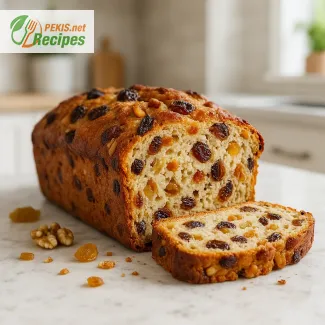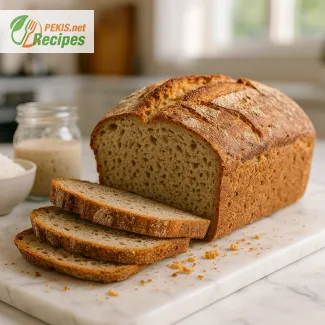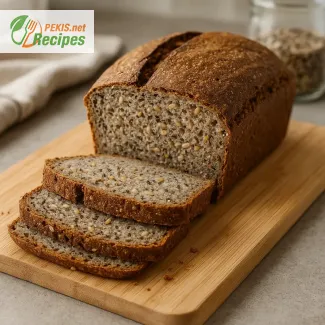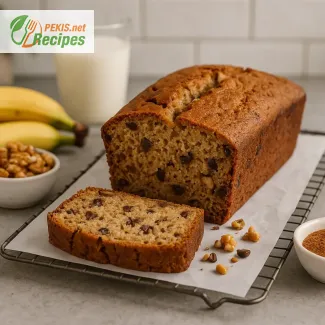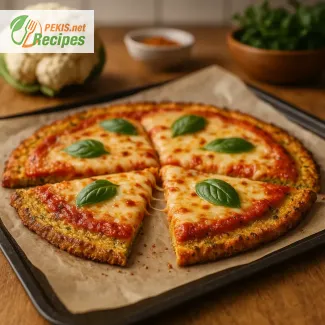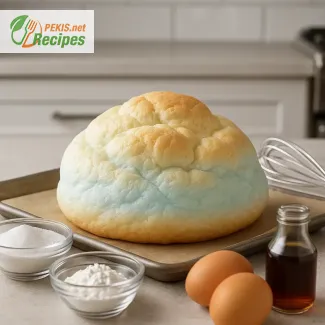
Discover the Ultimate Moist and Flavorful Banana Bread Without Gluten
A naturally sweet loaf packed with bananas and comfort in every slice
When it comes to comfort baking, few things rival the nostalgic aroma of freshly baked banana bread wafting through the kitchen. Whether you're on a gluten-free journey or simply want a moist banana bread recipe without gluten, this delightful loaf delivers a rich, satisfying taste without compromising texture. Our version of gluten-free banana bread is tender, lightly caramelized on the outside, and bursting with naturally sweet banana flavor. It’s a recipe born from simplicity, ideal for breakfast, an afternoon snack, or even a wholesome dessert with your favorite spread.
What makes this gluten-free banana bread stand out is its perfect balance between moisture and structure—soft enough to melt in your mouth, yet sturdy enough to slice cleanly without crumbling. It offers the same comfort and indulgence as the classic version but is carefully crafted to suit those who avoid gluten. Using naturally gluten-free flours and ripe bananas, this loaf bakes into a golden masterpiece that looks and tastes like it came from a cozy countryside bakery.
Why this gluten-free banana bread is truly the best
Every bite of this easy gluten-free banana bread delivers a delicate crumb, a gentle hint of cinnamon, and the deep sweetness of bananas at peak ripeness. The secret to its moist texture lies in the combination of mashed bananas, eggs, and plant-based fat like coconut oil or butter substitute. It’s a forgiving batter that welcomes additions like chopped walnuts, dark chocolate chips, or even a swirl of nut butter if you're feeling creative.
Ripe bananas not only provide natural sweetness but also replace part of the fat and bind the ingredients beautifully. The use of almond flour, oat flour, or a gluten-free flour blend adds body and flavor depth, ensuring this banana bread doesn’t feel like a compromise but rather a flavorful improvement on the original. For those who are new to gluten-free baking, this recipe is a perfect entry point—it doesn’t rely on any obscure ingredients, and the results are consistently rewarding.
The aroma, the texture, the taste – it's all in the details
The key to the incredible flavor of gluten-free banana bread is the bananas themselves. Overripe bananas with plenty of brown spots are essential. Their soft texture and enhanced sugar content create a naturally rich and sweet batter. Once baked, the sugars caramelize along the crust, offering that irresistible golden hue and slightly crisp exterior that contrasts beautifully with the tender inside.
Using quality ingredients and precise ratios ensures that this banana bread isn't gummy, dry, or overly dense—common problems in many gluten-free loaves. The structure is airy, yet satisfying, and slices hold their shape beautifully, making it ideal for toasting or slathering with a pat of butter or cream cheese.
A gluten-free banana bread that suits every occasion
This loaf fits seamlessly into a busy morning routine or a cozy weekend brunch. It’s also a crowd-pleaser for gatherings, potlucks, and holidays, especially when you need a treat that can be enjoyed by people with gluten intolerance or celiac disease. The beauty of this banana bread without gluten lies in its versatility: pair it with coffee, serve it with fruit, or enjoy it as is—the flavor speaks for itself.
Whether you're an experienced gluten-free baker or just looking for a foolproof way to use up those ripe bananas sitting on your counter, this recipe is guaranteed to become a staple in your kitchen. It's fuss-free, reliable, and most importantly, it delivers on all fronts: taste, texture, and appearance. Once you try it, you'll find yourself reaching for this loaf time and again.
- Preheat the oven to 175°C (350°F). Line a standard loaf pan (approx. 22 x 12 cm / 9 x 5 inch) with parchment paper or grease it lightly with coconut oil.
- Mash the bananas in a large mixing bowl using a fork or potato masher until mostly smooth with a few small lumps remaining.
- Add eggs, brown sugar, melted coconut oil, vanilla extract, and apple cider vinegar to the mashed bananas. Whisk until the mixture is smooth and well combined.
- In a separate bowl, mix together almond flour, oat flour, baking soda, cinnamon, and salt.
- Combine wet and dry ingredients by folding the flour mixture into the banana mixture using a spatula. Mix until no dry streaks remain, but avoid overmixing.
- Optional additions: Fold in chopped walnuts or chocolate chips, if using.
- Transfer the batter to the prepared loaf pan and smooth the top with a spatula.
- Bake for 50 minutes, or until a toothpick inserted into the center comes out clean.
- Cool in the pan for 10 minutes, then remove and allow to cool completely on a wire rack before slicing.
Elevate Your Homemade Gluten-Free Banana Bread with Simple Upgrades
Expert tips for making your loaf even more delicious, healthy, and foolproof
Gluten-free banana bread is already a beloved staple in many kitchens, known for its moist crumb, sweet banana aroma, and simplicity. But like any classic, there's always room for enhancement. Whether you're baking for dietary reasons or simply enjoy a naturally sweet, hearty loaf, a few strategic tweaks can take your gluten-free banana bread from good to exceptional. This article explores how subtle changes in ingredients, technique, and preparation can dramatically boost the flavor, texture, and nutritional value of your homemade banana bread.
Use overripe bananas for maximum flavor and sweetness
One of the easiest and most impactful ways to improve your recipe is to use bananas that are deeply ripe, with plenty of dark spots. Overripe bananas are not only softer and easier to mash, but they also contain more natural sugars, which enhances the sweetness and caramelization of the loaf. This means you can reduce the amount of added sugar in your recipe without compromising taste.
If your bananas aren’t ripe enough, you can speed up the ripening process by baking them in their peels at 150°C (300°F) for 15 minutes or placing them in a brown paper bag overnight.
Try a blend of gluten-free flours for better texture
Using just one type of gluten-free flour may result in a loaf that is either too dry or too gummy. To achieve a balanced crumb and rich flavor, consider blending two or more flours. For example:
- Almond flour provides moisture and richness.
- Oat flour gives structure and mild sweetness.
- Tapioca starch or arrowroot can add chewiness and lightness.
Avoid relying solely on coconut flour, which absorbs a lot of liquid and can make the loaf dense unless used sparingly and paired with moist ingredients.
Enhance depth with natural sweeteners and spices
While brown sugar is a classic choice, try swapping it for maple syrup, honey, or coconut sugar to give your banana bread a deeper, more nuanced sweetness. These alternatives also bring mineral content and antioxidants, depending on the source.
Spices like cinnamon, nutmeg, or even cardamom can round out the flavor profile and give the bread a comforting, warm aroma. A pinch of sea salt can help intensify the sweetness without increasing sugar.
Add healthy fats and moisture boosters
If you’re using a recipe that calls for butter, consider switching to coconut oil or olive oil. These fats not only support a tender texture but also contribute to heart health and offer subtle flavor notes.
Other great ways to lock in moisture include:
- Yogurt or sour cream (for a richer, denser loaf)
- Applesauce or pumpkin puree (to reduce fat and add moisture)
- Nut butters, such as almond or cashew, for flavor and creaminess
Each of these changes affects not only the nutritional value but also the mouthfeel and aroma of the final product.
Fold in extras for texture and nutrition
One of the joys of banana bread is its versatility. Try mixing in:
- Chopped walnuts or pecans for crunch and omega-3s
- Dark chocolate chips for a hint of indulgence
- Blueberries or dried cranberries for fruity brightness
- Chia or flaxseeds for fiber and added texture
Make sure to toss your add-ins in a bit of flour before mixing them into the batter. This helps prevent them from sinking to the bottom during baking.
Avoid common mistakes that ruin the loaf
Even experienced bakers sometimes encounter issues. Here are a few pitfalls to steer clear of:
- Overmixing the batter leads to a dense loaf. Stir gently until the flour is just incorporated.
- Too much flour makes the bread dry. Always measure with a kitchen scale or spoon flour into your measuring cup and level it.
- Underbaking can result in a gummy center. Use the toothpick test: insert it into the center—if it comes out clean or with a few crumbs, it's done.
- Ignoring pan size can lead to uneven cooking. Always use a standard loaf pan unless otherwise directed.
Make it healthier without sacrificing taste
For those watching their sugar or fat intake, small adjustments can go a long way:
- Reduce added sugar by 25% and use very ripe bananas for natural sweetness.
- Replace part of the oil with unsweetened applesauce to lower calories.
- Choose a gluten-free oat flour high in fiber instead of refined flour.
- Use egg alternatives like flax eggs for a plant-based option.
These tweaks can make your banana bread more suitable for various diets while keeping it delicious and satisfying.
Why baking it at home makes all the difference
Store-bought gluten-free banana bread often contains preservatives, stabilizers, and artificial sweeteners to extend shelf life. By baking it at home, you maintain full control over what goes into your food. You can use organic ingredients, choose unprocessed sweeteners, and adjust the recipe to suit your dietary needs.
Additionally, baking your own loaf allows you to experiment with flavor profiles, test new flour combinations, and discover what works best for your taste. The result is not just a fresher loaf, but a more personalized, healthier experience.
Small upgrades, big results
From using the ripest bananas to carefully selecting your flour blend and add-ins, every element of this humble recipe can be elevated with just a bit of thought. Whether you're baking for guests, family, or yourself, making intentional improvements results in a loaf that’s not only gluten-free but unforgettable in flavor, texture, and nourishment. The more you practice, the more refined and rewarding your version of this classic treat becomes.
Allergens present in the recipe:
- Eggs
- Tree nuts (almond flour, optional walnuts)
- Oats (if not certified gluten-free, may contain traces of gluten)
How to remove allergens and gluten:
- Eggs: Replace with flax eggs (2 tbsp ground flaxseed + 6 tbsp water)
- Almond flour: Substitute with sunflower seed flour in equal quantity
- Oat flour: Ensure certified gluten-free oats or use buckwheat flour for a gluten-free alternative
- Optional walnuts: Omit or replace with pumpkin seeds
- Vitamin B6: 0.35 mg – Supports brain function and mood regulation
- Magnesium: 55 mg – Important for muscle and nerve function
- Potassium: 320 mg – Helps maintain normal blood pressure
- Vitamin E: 1.2 mg – Protects cells from oxidative stress
- Iron: 1.3 mg – Supports oxygen transport in the blood
- Zinc: 0.8 mg – Enhances immune function
- Polyphenols (from bananas and cinnamon): ~40 mg – Help fight inflammation and support cardiovascular health
- Vitamin E (tocopherol): 1.2 mg – Protects against free radicals
- Flavonoids (if using dark chocolate): ~25 mg – May reduce risk of heart disease and improve brain health
